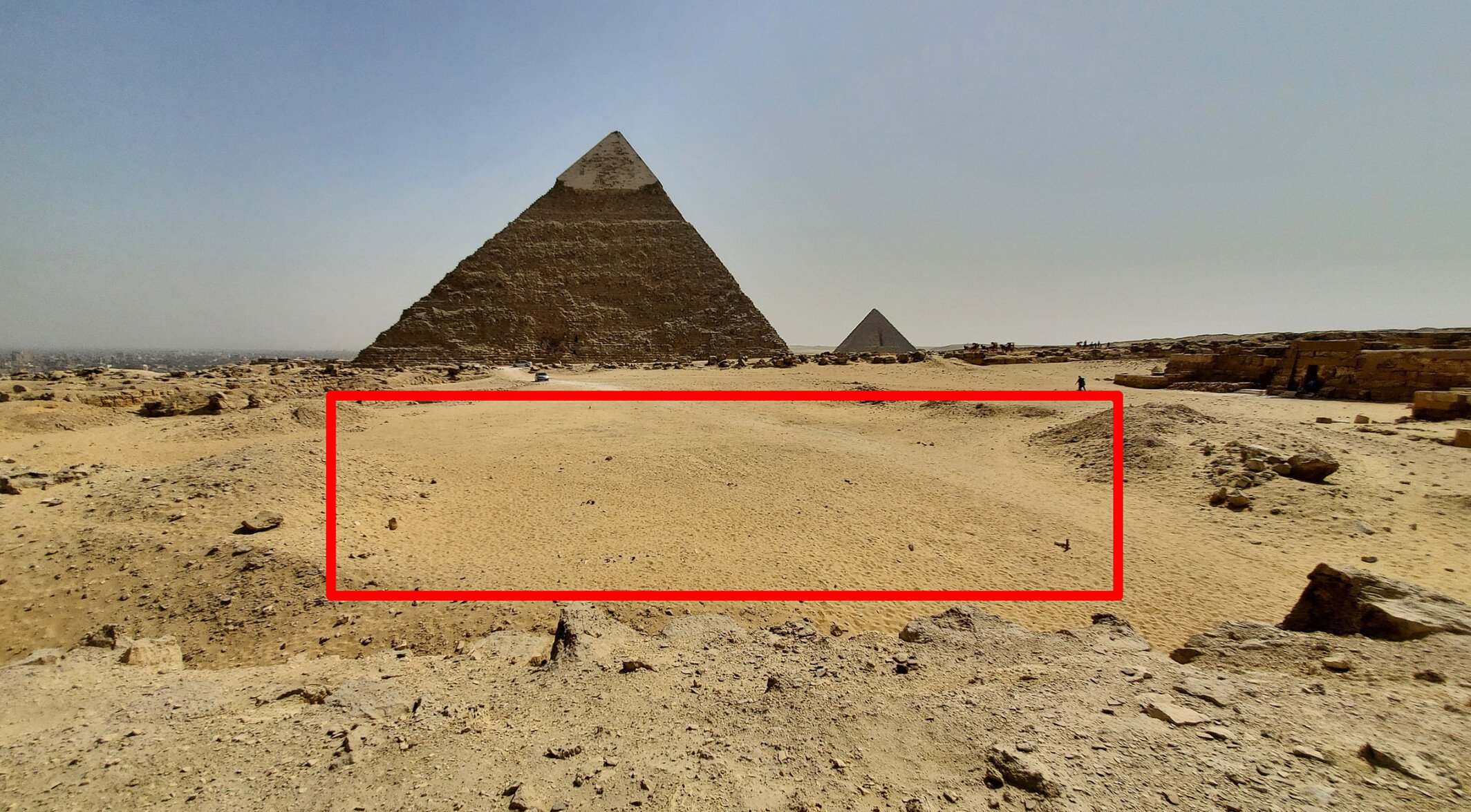
A group of archaeologists have discovered a mysterious L-shaped structure hidden in a cemetery next to the Great Pyramid of Khufu in Giza, both of which were built approximately 4,500 years ago.
The team, consisting of researchers from Egypt’s National Research Institute of Astronomy and Geophysics, and Japan’s Higashi Nippon International University and Tohoku University, discovered the anomalous “blank area” by scanning the surface of Giza’s elite Western Cemetery with ground-penetrating technology.
The burial ground was reserved for members of King Khufu’s royal family and high-ranking officials, who were laid to rest in funerary tombs called mastabas. The new discovery is surrounded by these structures, all built in regular alignment, but no noteworthy excavations have taken place in this unusual vacant area.
Initial GPR survey area, left-hand: general view, right-hand: detailed map. Photo: © Higashi Nippon International University.
Other areas of the Western Cemetery have long been an important site of archaeological discovery, including mastabas dating from the 4th to the 6th dynasties. Treasures such as the basalt seated statue of dwarf Perniankh and the limestone statue of Kapunisut Kai are among the more recent discoveries that have shed light on the history of the Giza Pyramids and ancient Egyptian life.
According to the team’s report in Archaeological Prospection, published on May 4, “the structure causing the anomalies could be vertical walls of limestone or shafts leading to a tomb structure. However, a more detailed survey would be required in order to confirm this possibility.”
They can already confirm that the structure is around 10 meters by 15 meters, at a depth of 0.5 to 2 meters, and is filled with “homogenous sand,” suggesting it was filled in after its construction. Another anomaly has been found at a greater depth, which could indicate a tomb entrance leading to another chamber.
GPR depth slice: C-scan (200 MHz). Photo: © Higashi Nippon International University.
Research began in 2021, when a geophysical survey was conducted using ground-penetrating radar (GPR) and electrical resistivity tomography (ERT). These discoveries have been revealed after two years of intensive investigation, all without breaking ground.
“We believe that the continuity of the shallow structure and the deep large structure is important,” the team added in the report. In order to ascertain the true significance, however, they recommend that a more comprehensive excavation takes place as soon as possible.